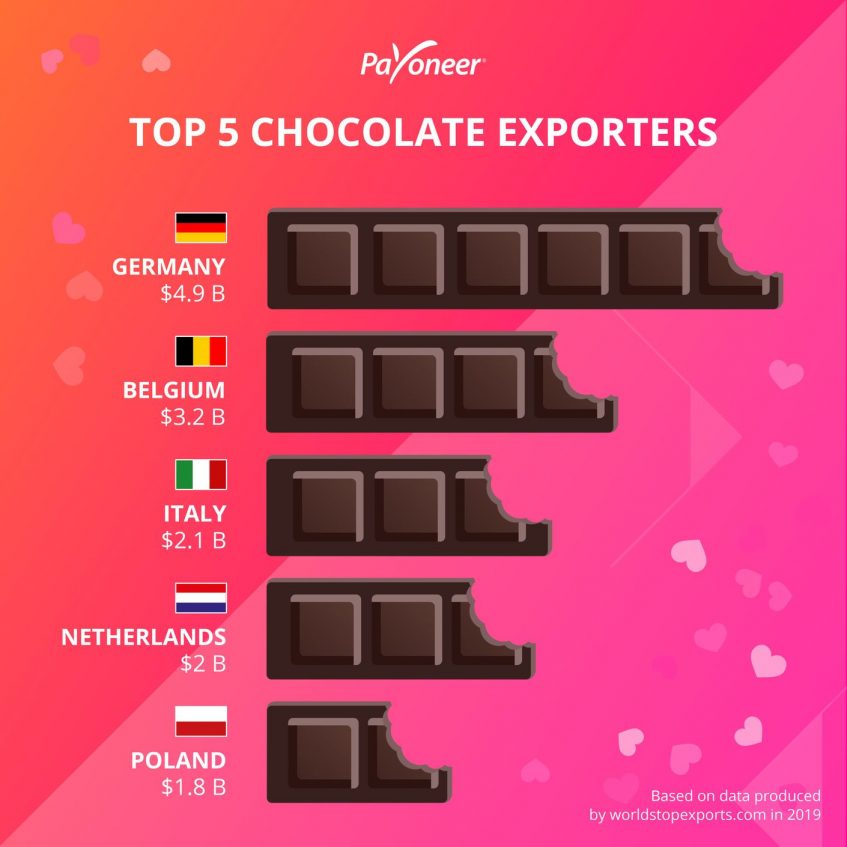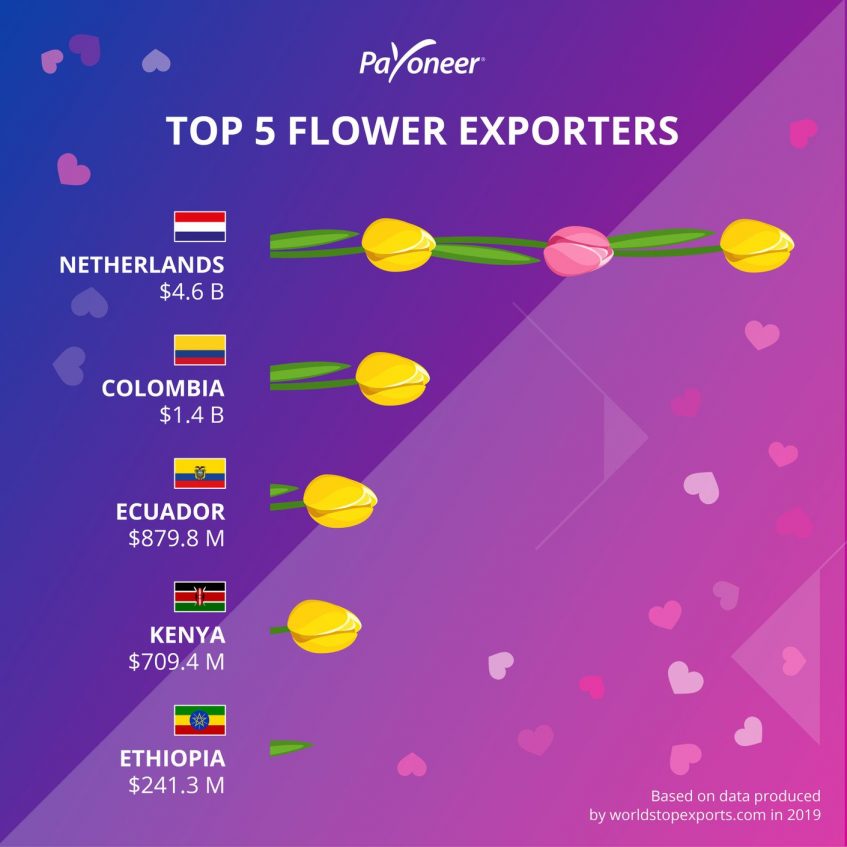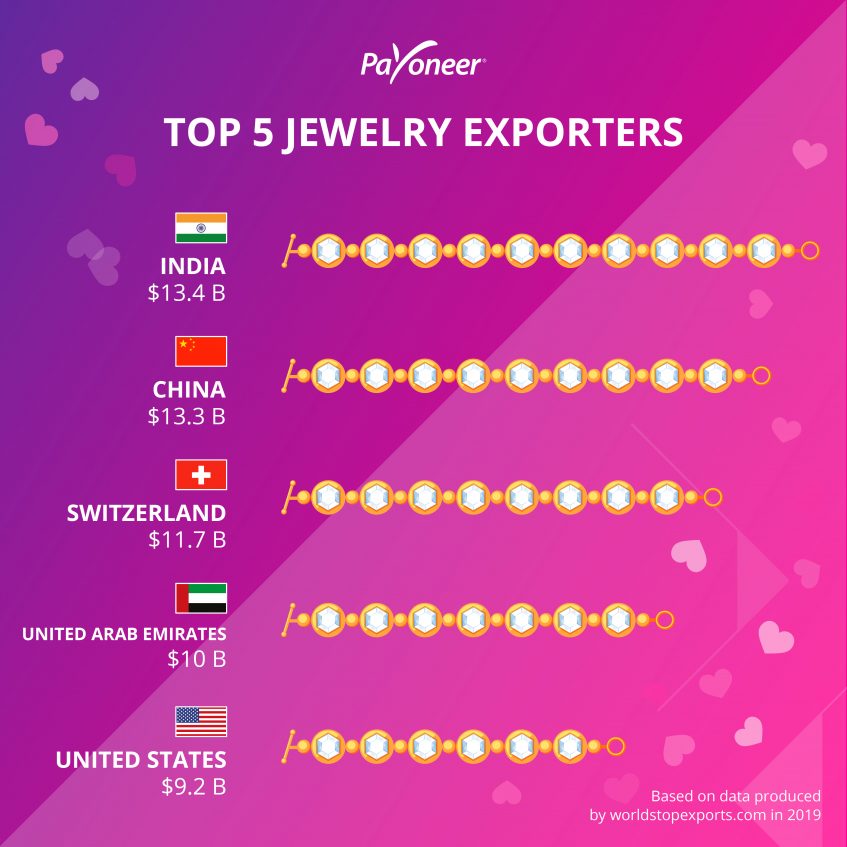
Love the Way You Get Paid this Valentine’s Day
With Valentine’s Day fast approaching, millions of people all over the world will be thinking how to show their love and appreciation for the loved ones in their lives. Often this love is shown by way of gifts, the most popular being chocolate, flowers and jewelry. However, while today it may seem straightforward for lovers to give these gifts, it wasn’t always so easy for cross-border traders to guarantee their delivery, or receive payment, for them.
This Valentine’s Day we want to show our own love and appreciation for cross-border sellers by taking a closer look at the history and trading challenges of these popular Valentine’s Day gifts and see how today, thankfully, there is a much better way to trade and get paid.
Chocolates
While the cacao tree was cultivated in Central and South America as early as 1400 B.C., its delicious product wasn’t associated with anything romantic until much, much later, in 1800s Europe.


Looking at the graphic above, it’s no surprise that the chocolate exports leaderboard comprises European countries like Germany and Belgium. Many improvements in the development of these sweets originated there after the delicacy first hit Europe as “drinking chocolate” in the 16th century. Fast forward to 1861, after several innovations in the chocolate making process, and Richard Cadbury had started putting his company’s chocolates into fancy decorated boxes as giftable sentiments of love. And just like that, a romantic tradition was born.
But transporting it from the Aztec and Mayan kingdoms of South America to the sweet tooths in Medieval Europe wasn’t easy. Shipping the delightful cargo was fraught with dangers such as stormy seas, pirates, not to mention the huge investment required in financing such voyages. And to top it all, a chief exporter may have even received payment for the cargo he was trading in the cargo itself – cacao beans! Not the most reliable of currencies if you’re wanting to save and store it for a long time without it degrading and perishing…
So, was it any better for those trading in another Valentine’s Day classic, flowers?
Flowers
The tradition of giving Valentine’s Day flowers is widely believed to have started in the late 17th century during the reign of Sweden’s King Charles II when he learned about the language of flowers during a trip to Persia.


From there the Swedish king’s love of flowers was adopted by countless others. So much so that 250 years later, the National Retail Federation estimates that nearly $2 billion of the expected $21 billion spent on Valentine’s Day this year will be in floral arrangements.
Now, while the Netherlands is clearly the leading exporter of flowers to the world, some African countries, somewhat surprisingly, have also taken their place with the world’s top 5 flower producers. This follows a 1970’s oil crisis which increased the cost of heating greenhouses in north African countries and triggered a migration of flower production to more southern countries. As a result, Kenya is today responsible for an estimated one third of the roses sold in the EU, and, after tea, flowers are its second most popular export.
However, the Netherlands’ clearly holds a dominant position in floral fulfillment, a position that dates to over 200 years ago. Indeed, this may sound impossible but the Dutch are responsible for the import and (re)export of a massive 40% of the world’s flower trade.
But like those who traded in chocolates, those doing a cross-border trade in flowers hundreds of years ago were exposed to great risks and dangers to their lives. From diseases, such as scurvy, to navigational problems due to inaccurate guidance tools, cross-border traders faced problems that modern day importers and exporters don’t even think about.
Was the story the same for those trading in Valentine’s Day’s most valuable commodity – jewelry?
Jewelry
Civilizations have made jewelry out of rocks, shells, and other natural resources since as early as 3000 B.C. If only the loved ones in our lives would be satisfied with shells today…! Instead, Valentine’s Day jewelry gifts in modern times are more likely to be made of valuable gemstones such as diamonds, gold, and silver.


But have you ever wondered which countries are responsible for the greatest trade in such gemstones? Look no further than India, which tops the global jewelry export charts. As the birthplace of adornment, this ancient culture-filled country was the single provider of gemstones for nearly 2,000 years attracting merchants from around the world to peruse the selection of Indian diamonds, sapphires, and pearls. However, as most jewelry is made from precious metals as well, the well-developed gold and silver industries in countries like China and Switzerland help those countries soar to the top of the jewelry export charts.
Like those trading chocolates and flowers, though, cross-border diamond and other precious stones merchants, were subject to horrific conditions both on and off the ship. Cramped conditions, terrible food, cut off from normal life for months, if not years, all made for an almost unbearable way to live. And for those who did survive the lengthy periods at sea and made it to their final destinations, the pay was so poor that its hard to comprehend why they thought it was worth the effort at all.
Falling in Love with Cross-Border Trade and Payments
Due to the digital transformation of global commerce, the modern world of cross-border trade is, thankfully, a lot safer and more reliable for all. Those buying and selling classic Valentine’s Day goods such as chocolates, flowers, and jewelry, or anything else for that matter, don’t need to worry about even a fraction of the problems faced by their historical predecessors.
Getting paid by global marketplaces, though, can still sometimes be a challenge.
That’s where Payoneer can help. Providing millions of online sellers worldwide with simple and cost-effective payments solutions, such as multi-currency receiving accounts, Payoneer makes doing business globally as easy as doing it locally.
Check out how we can help your cross-border business grow – we know you’re going to love it.




